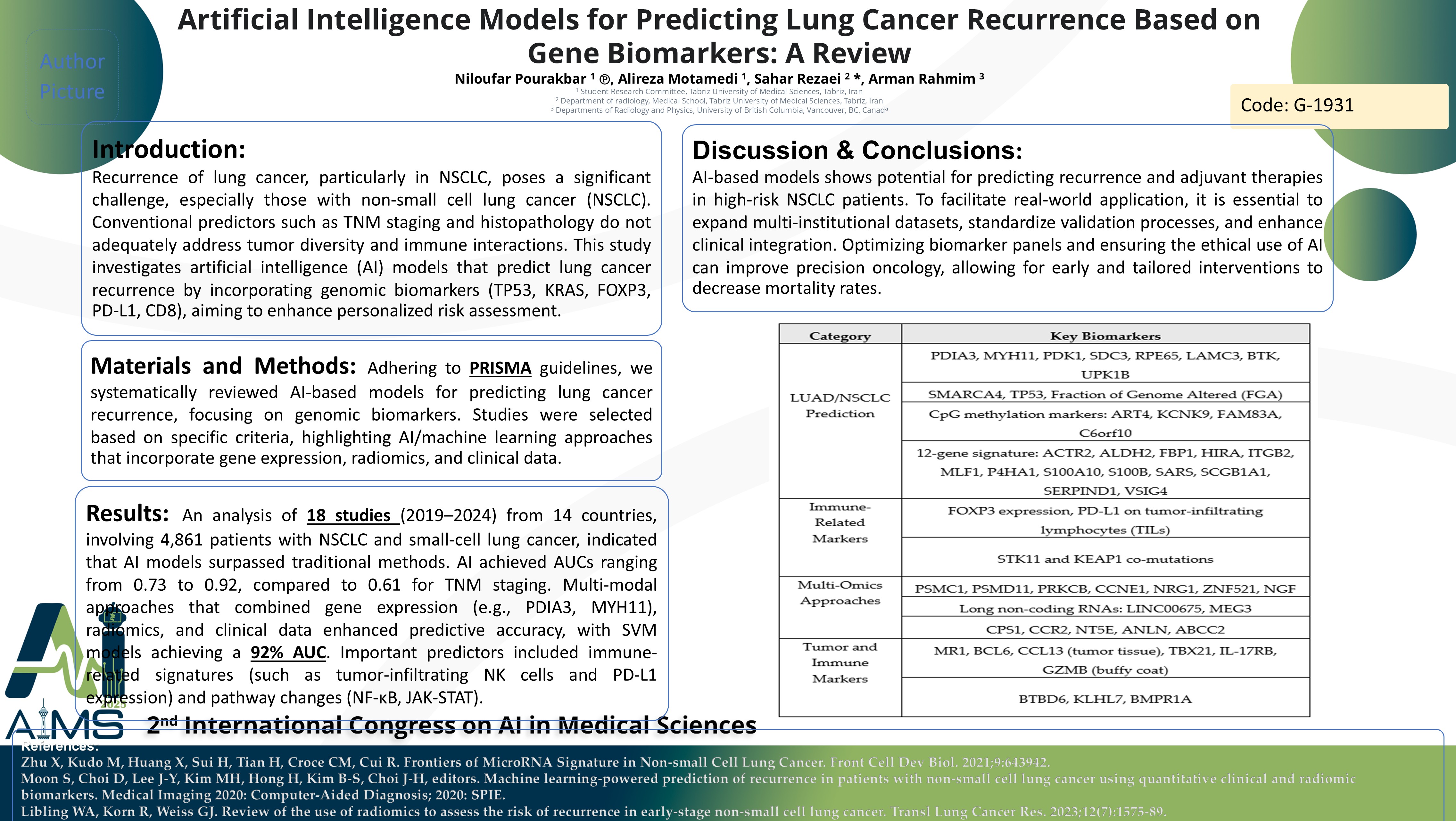مدل های هوش مصنوعی برای پیش بینی عود سرطان ریه بر اساس بیومارکر های ژنی؛ مطالعه مروری
کد: G-1931
نویسندگان: Niloufar Pourakbar ℗, Alireza Motamedi, Sahar Rezaei *, Arman Rahmim
زمان بندی: زمان بندی نشده!
برچسب: تشخیص و درمان سرطان
دانلود: دانلود پوستر
خلاصه مقاله:
خلاصه مقاله
Background and aims: Lung cancer, one of the most common cancers globally, is the leading cause of cancer-related fatalities. Recurrence of lung cancer, particularly in NSCLC, poses a significant challenge, especially those with non-small cell lung cancer (NSCLC), with rates between 30% and 70% following initial treatment. Conventional predictors such as TNM staging and histopathology do not adequately address tumor diversity and immune interactions. This study investigates artificial intelligence (AI) models that predict lung cancer recurrence by incorporating genomic biomarkers (TP53, KRAS, FOXP3, PD-L1, CD8), aiming to enhance personalized risk assessment. Methods: Adhering to PRISMA guidelines, we systematically reviewed AI-based models for predicting lung cancer recurrence, focusing on genomic biomarkers. Studies were selected based on specific criteria, highlighting AI/machine learning approaches that incorporate gene expression, radiomics, and clinical data. Data extraction included study design, AI algorithms (such as neural networks, SVM, and gradient boosting), performance metrics (AUC, sensitivity), and clinical relevance. Two reviewers independently screened and evaluated the studies to ensure accuracy and reduce bias. Results: An analysis of 18 studies (2019–2024) from 14 countries, involving 4,861 patients with NSCLC and small-cell lung cancer, indicated that AI models surpassed traditional methods. AI achieved AUCs ranging from 0.73 to 0.92, compared to 0.61 for TNM staging. Multi-modal approaches that combined gene expression (e.g., PDIA3, MYH11), radiomics, and clinical data enhanced predictive accuracy, with SVM models achieving a 92% AUC. Important predictors included immune-related signatures (such as tumor-infiltrating NK cells and PD-L1 expression) and pathway changes (NF-κB, JAK-STAT). However, challenges included small sample sizes (41–1,348 patients), data variability, and limited external validation. Conclusions: AI-based models shows potential for predicting recurrence and adjuvant therapies in high-risk NSCLC patients. To facilitate real-world application, it is essential to expand multi-institutional datasets, standardize validation processes, and enhance clinical integration. Optimizing biomarker panels and ensuring the ethical use of AI can improve precision oncology, allowing for early and tailored interventions to decrease mortality rates.
کلمات کلیدی
Lung Cancer Recurrence, Gene Biomarkers
